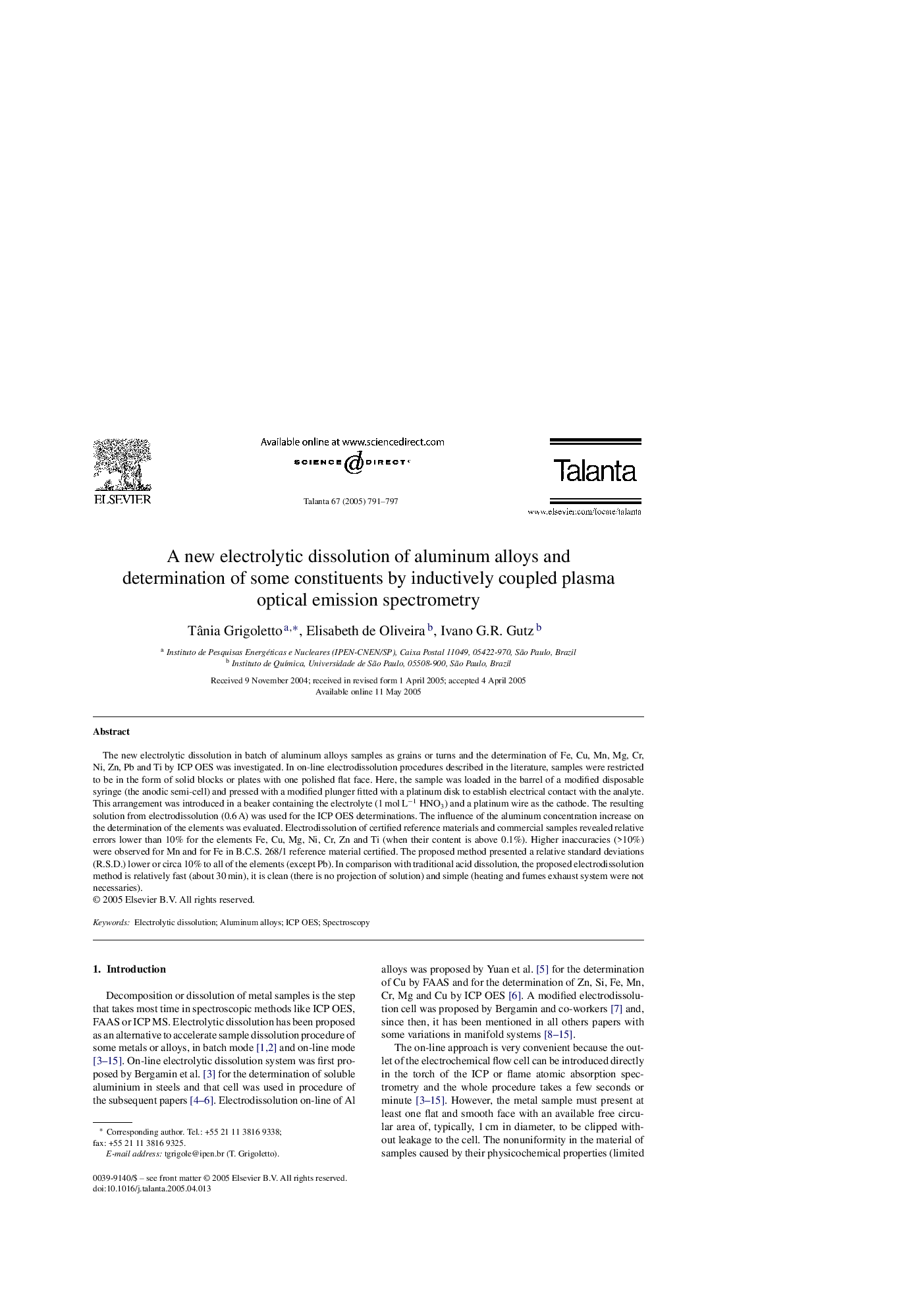| Article ID | Journal | Published Year | Pages | File Type |
|---|---|---|---|---|
| 10561406 | Talanta | 2005 | 7 Pages |
Abstract
The new electrolytic dissolution in batch of aluminum alloys samples as grains or turns and the determination of Fe, Cu, Mn, Mg, Cr, Ni, Zn, Pb and Ti by ICP OES was investigated. In on-line electrodissolution procedures described in the literature, samples were restricted to be in the form of solid blocks or plates with one polished flat face. Here, the sample was loaded in the barrel of a modified disposable syringe (the anodic semi-cell) and pressed with a modified plunger fitted with a platinum disk to establish electrical contact with the analyte. This arrangement was introduced in a beaker containing the electrolyte (1 mol Lâ1 HNO3) and a platinum wire as the cathode. The resulting solution from electrodissolution (0.6 A) was used for the ICP OES determinations. The influence of the aluminum concentration increase on the determination of the elements was evaluated. Electrodissolution of certified reference materials and commercial samples revealed relative errors lower than 10% for the elements Fe, Cu, Mg, Ni, Cr, Zn and Ti (when their content is above 0.1%). Higher inaccuracies (>10%) were observed for Mn and for Fe in B.C.S. 268/1 reference material certified. The proposed method presented a relative standard deviations (R.S.D.) lower or circa 10% to all of the elements (except Pb). In comparison with traditional acid dissolution, the proposed electrodissolution method is relatively fast (about 30 min), it is clean (there is no projection of solution) and simple (heating and fumes exhaust system were not necessaries).
Related Topics
Physical Sciences and Engineering
Chemistry
Analytical Chemistry
Authors
Tânia Grigoletto, Elisabeth de Oliveira, Ivano G.R. Gutz,
